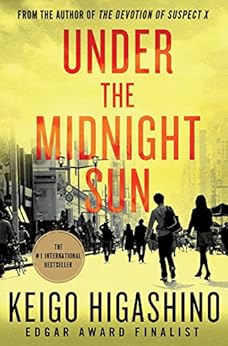4 Stars
This is a non-traditional mystery by one of my favourite mystery writers. It focuses on the fallout of an unsolved
murder over nearly two decades.
In 1973,
Yosuke Kirihara, a pawnbroker, is found murdered in an abandoned building. Detective Sasagaki investigates. Suspicion falls on Fumiyo Nishimoto, a frequent
customer, and her lover, but there is no evidence of guilt and so the case
remains unsolved. After this inciting
incident, the book follows the lives of Ryo, the ten-year-old son of the victim,
and Yukiho, the daughter of the customer.
Through their adolescence and their young adulthood, misfortune befalls
many of Ryo and Yukiho’s acquaintances, friends, and family.
Point of
view is used in an interesting way. Ryo
and Yukiho remain very much in the background because chapters are narrated
from the point of view of various minor characters. Obviously, this is an effective technique to
create suspense. Since Ryo and Yukiho’s
thoughts and feelings are never directly revealed, the reader can only guess at
what motivates them or at their degree of involvement in events.
The plot
can best be described as labyrinthine with numerous twists and turns, but in
the end, all the details of the various subplots come together. How these subplots will be connected is one
of the things that keeps the reader’s interest.
The ending is not really a surprise; in fact, I would argue that the
book could not have ended differently.
The cast of
characters is massive. A character may
show up in one section and then disappear, only to reappear years later. Non-Japanese readers might have some
difficulty with the names. The first
chapter introduces Yosuke, Yaeko and Ryo Kirihara; Isamu Matsuura; Fumiyo and
Yukiho Nishimoto; and Tadao Terasaki.
Other significant characters are Eriko Kawashima, Yuichi Akiyoshi,
Miyako Fujimura, Fumihiko Kikuchi, Tomohiko Sonomura, Namie Nishiguchi,
Kazunari and Yasuharu Shinozuka, Makoto Takamiya, Chizuru Misawa – and the list
could go on and on. I would advise
readers to perhaps begin a chart to remember characters.
The book is
certainly dark with some very dark characters.
However, even the villains are in the end shown to be human. When the reader learns about the backstories,
motivations become clear and some sympathy is even felt for the bad guys.
The
duration of the novel is almost twenty years, and the passage of time is shown
through references to events in Japan; it is the allusions to advances in
computer technology between 1973 and 1992 that are most distinctive.
This is a
clever book which I found to be a compelling read. I was disappointed when I reached the end of
this novel; as lengthy as it is, I would have liked it to continue.

No comments:
Post a Comment